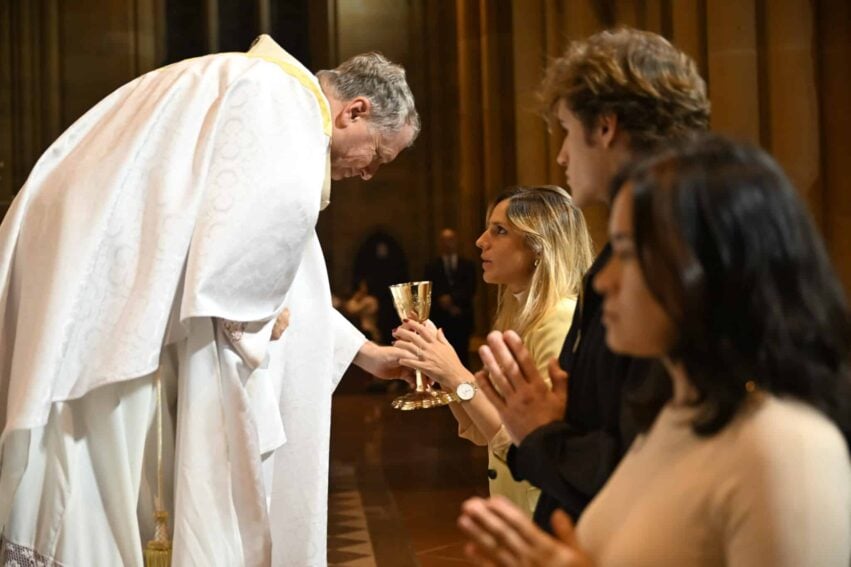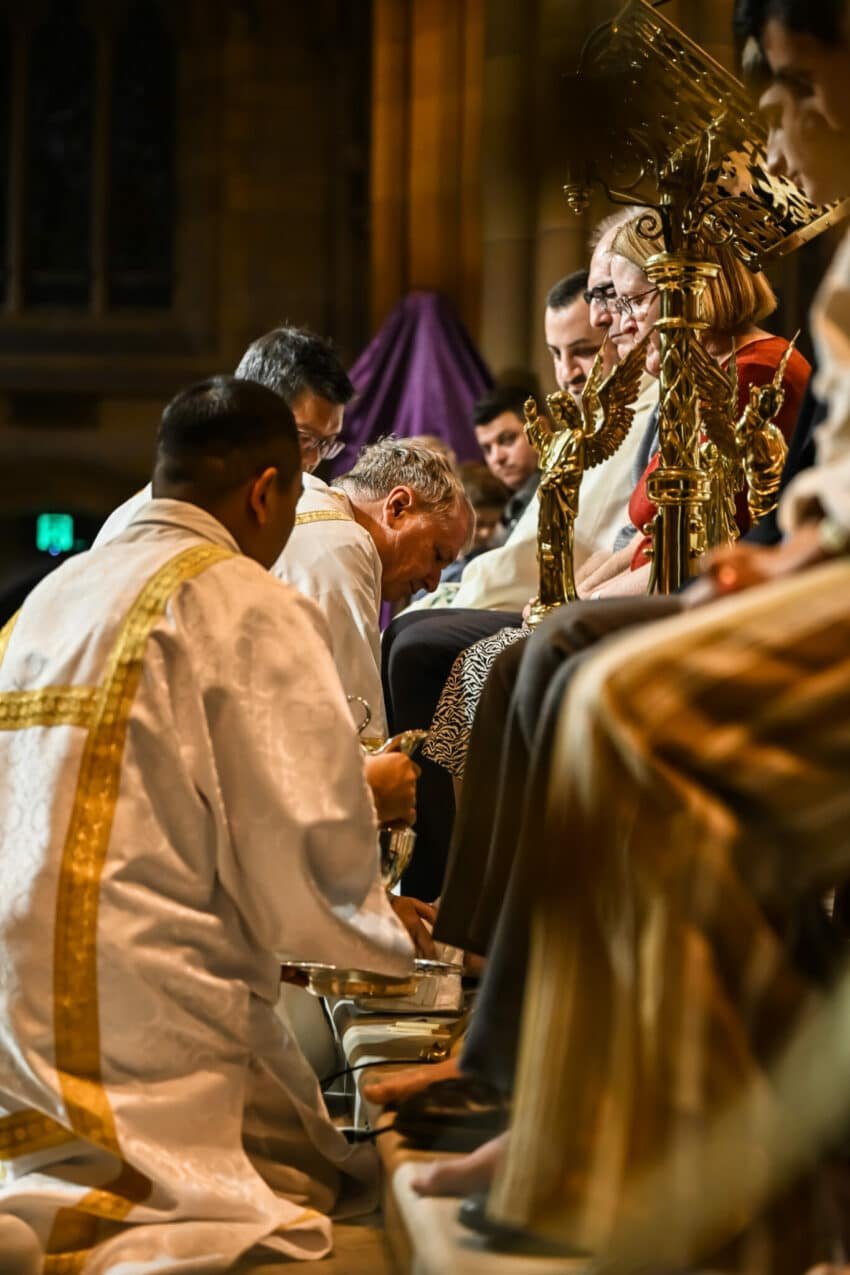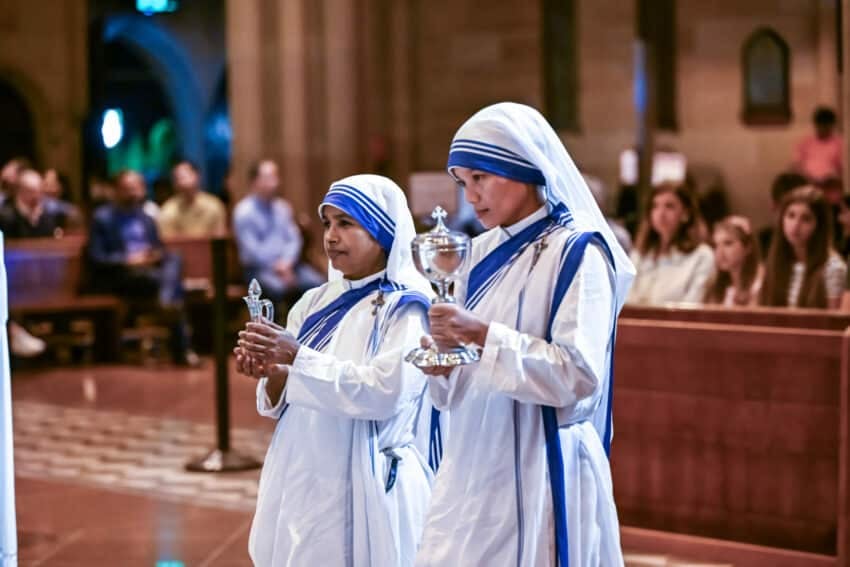
The quest for the Holy Grail was part of the Arthurian legend that evolved in the Middle Ages, first in Celtic ballards and then French romances. In Chrétien de Troyes’ Perceval, the grail was a miraculous food salver, protected by the Fisher King. When Robert de Boron retold the tale in his Joseph of Arimathea, it had become the Chalice used by Our Lord at His Last Supper, now with healing powers. And so the myth passed through Eschenbach to Wagner, from Malory to Blake and Elliot, and into contemporary culture through Monty Python and Indiana Jones. While several artefacts have been identified with the Grail down the centuries, none has been authenticated. And while Glastonbury in England has become the favourite haunt for grail-hunters, its location remains a mystery…
The mystery is there tonight in the absence of a chalice from the first Passover (Ex 12:1-14). We receive strict instructions for how it’s to be celebrated: date and time, number of guests, dress code, protein and condiments, portion sizes, even rate of consumption. “That night, the flesh is to be eaten, roasted over the fire; it must be eaten [hastily] with unleavened bread and bitter herbs.” For us Christians the Passover points to the Eucharist: the bread eaten with lamb becomes flesh of the Lamb of God wrapped in the accidents of unleavened bread—the Body of Christ. But where, we wonder, is the cup of wine? There’s no mention of it in Moses’ instructions…

Was Jesus being a typical Catholic in introducing grog at what should have been a dry Passover? No, it’s clear that by Jesus’ day (and ever since) the kiddush or blessing of both the unleavened bread and the cup of wine were at the heart of the annual Seder meal of the Jews. We know what Jesus did with the Bread on the night before He died. He then took the Chalice, returned thanks, and gave it to His disciples saying: “Take this, all of you, and drink from it, for this is the Chalice of my Blood, the blood of the new and eternal covenant, which will be poured out for you and for many, for the forgiveness of sins. Do this in memory of me.” (1Cor 11:23-26; Mt 26:26-29; Mk 14:22-25; Lk 22:17-19)
So, while mysteriously overlooked at the first Passover, the Chalice was central at the first Eucharist—and has been its symbol ever since. Before going out into the darkness with Jesus tonight, we hear Him announce that the next time He drinks it will be the new wine in God’s kingdom (Mk 14:25). In the Garden of Gethsemane, He prays the Father relieve Him of the bitter chalice of suffering; but says He will drink that grail if it is the Father’s will (Mk 14:36; Jn 18:11). It’s even there at the end, albeit in the form of a sponge or cup on the end of a hyssop stick, when they offer Jesus wine mixed with myrrh as He is dying on the cross (Mk 15:23).

According to the medieval legends of the Holy Grail, those who drank from it experienced miraculous healing, extension of life, even eternal youth. Hence the lengths to which some went to capture the chalice and others to protect it. Jesus had indeed taught that those who drank from His chalice, even if they die, will live forever (Jn 6:22-59). Even if they die: the Holy Grail of Christ is indeed the key to eternal life, but it is also inextricably tied up with death. It’s a chalice of wrath, a bitter cup, a sacrifice of spilt blood. It’s a memorial in which we proclaim Christ’s death.
Which brings us back to that first Passover celebration in The Book of Exodus with the missing grail. Moses instructs the Jews to save the blood of the lamb of sacrifice and daub it on the doorposts of their homes. This would be their passport, so the angel of death would pass them over. The blood of the lamb secures the lives of the Jewish people, at least for now. The Blood of the Lamb of God, daubed on the lintels of our bodies—our lips—will secure eternal life for us.
And so the cup, so central to the Passion of our Lord and to our salvation, was indeed there implicitly at the first Passover, explicitly at the Last Supper, and ever since at that Eucharist instituted on this night. Now in full view Christ tends us the chalice as a reminder that God wants nothing more than to love you with everything He has to give. Even His son. Even His own life. Through His Body and Blood, the angel of death passes over us all. And that Holy Grail, that brings healing to the human heart, points us to that heavenly banquet, when there will be no more sickness or suffering, but only Christ’s gift of life eternal.
